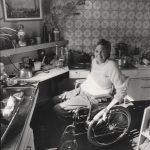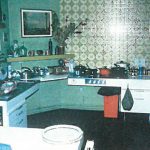School for the Blind architecture – and a secret tunnel
Images of the School for the Blind in Liverpool through time, from the archives of National Museums Liverpool.
 Survey results: deaf and disabled people in the cultural sector,
Survey results: deaf and disabled people in the cultural sector,
 Curating for Change: deaf and disabled people leading in museums,
Curating for Change: deaf and disabled people leading in museums,
 ‘I was always rebelling against the system’,
‘I was always rebelling against the system’,
 BSL introduction to the stories of Deaf people told by the History of Place project,
BSL introduction to the stories of Deaf people told by the History of Place project,
 Take our surveys, help us as we develop a work placement programme,
Take our surveys, help us as we develop a work placement programme,
 Washing up,
Washing up,
 Cooking,
Cooking,
 Typing,
Typing,
 Kitchen at Grove Road – two,
Kitchen at Grove Road – two,
 Kitchen,
Kitchen,
Images of the School for the Blind in Liverpool through time, from the archives of National Museums Liverpool.
Nina explores a young woman admitted to an asylum with insomnia and visions with religious overtones. She asks how we should interpret the diagnoses of other periods.
Other medieval hospitals near the pilgrimage site of Canterbury help us build a picture of care during the period.
Religious houses offered sanctuary to disabled people and those with illnesses. Ann Newman puts some names and occupations to those who stayed there.
Anna Ellis finds memories of an enlightened approach at Normansfield Hospital, very different to many Victorian asylums.
Centuries before the NHS, monasteries were a refuge for the sick. Ann Newman is researching the records of one such place, St John’s Canterbury.
Basket-weaving: the beautiful product of skilled labour valued by the well off, or low status work for disabled people, replacing an education? Esther Fox discusses how, at different times, it has been both.
How ‘sleepy sickness’ – the illness described by Oliver Sacks came to Bristol, and how disabled children helped soldiers returning from WW1 adapt to the loss of limbs.
Nina on the difficulty of deciphering other people’s handwriting in historical documents, and the quest to find women’s lives at Chiswick Asylum.
Maxine Clarke on the thrill of holding 14th century vellum – and realising that Chaucer’s Wife of Bath is deaf.